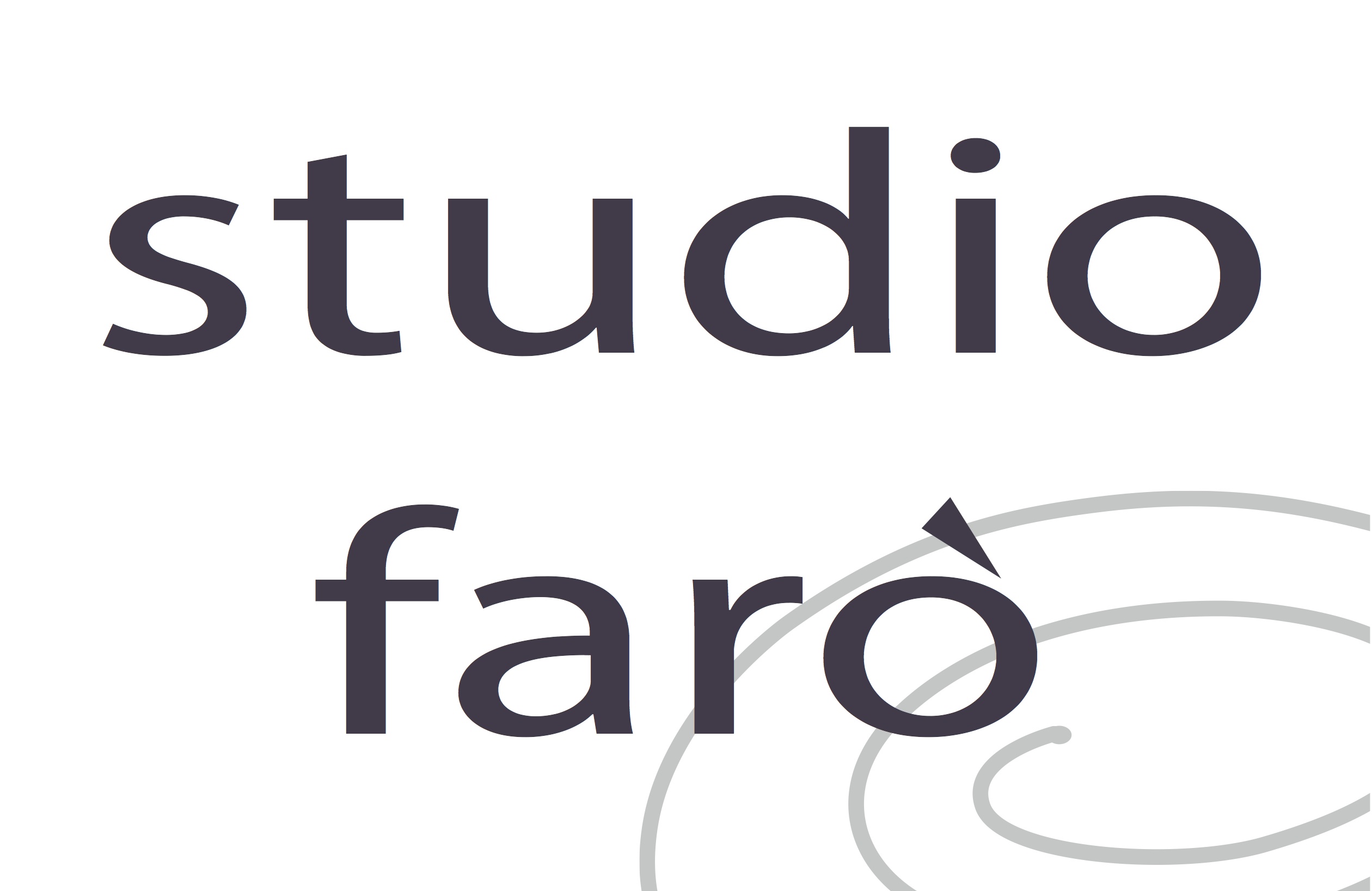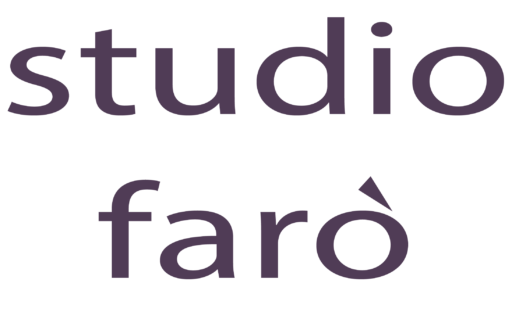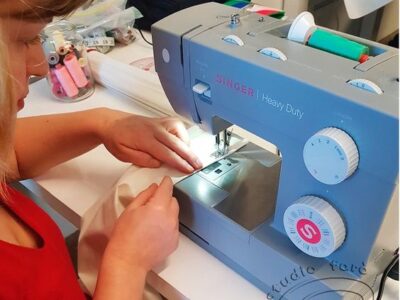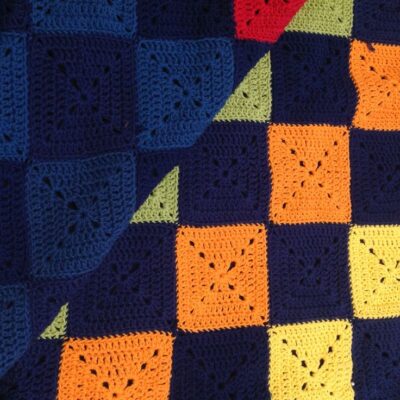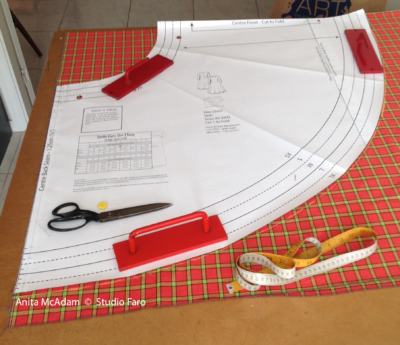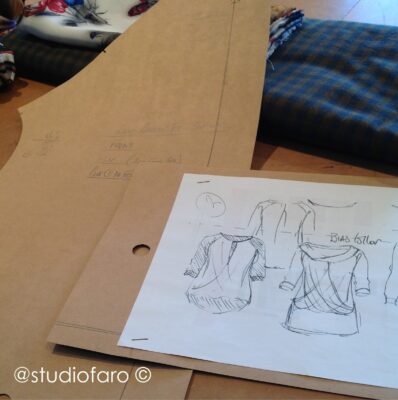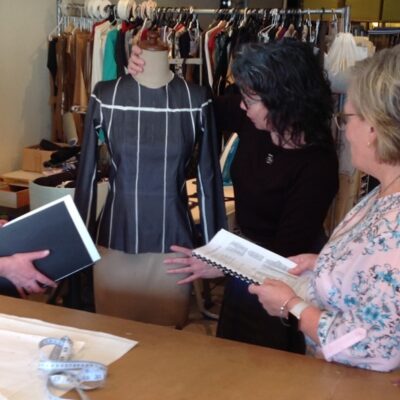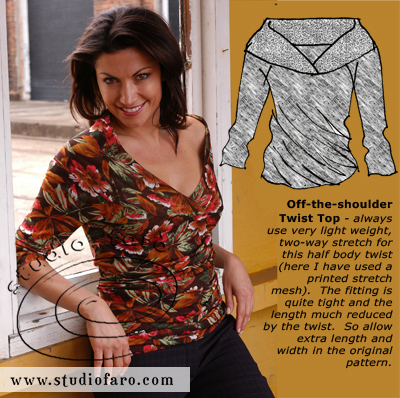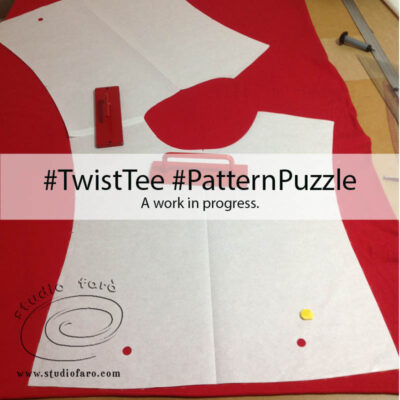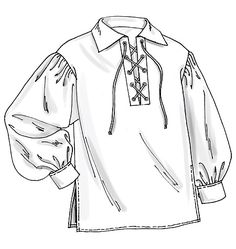04 Jun Body Twist Tee Sewing Pattern Release
At long last I've finished the PDF Sewing Pattern for the Body Twist Pattern Puzzle. It's a very large one piece pattern for the body of the garment with a double layer sleeve and ribbed neck trim. It's a soft and generous twist without being too tight. The construction is as simple as a tee-shirt without the need to finish any hems. Body and sleeves are double layers turned back on themselves. You'll find the history of this pattern development in these blog posts.

